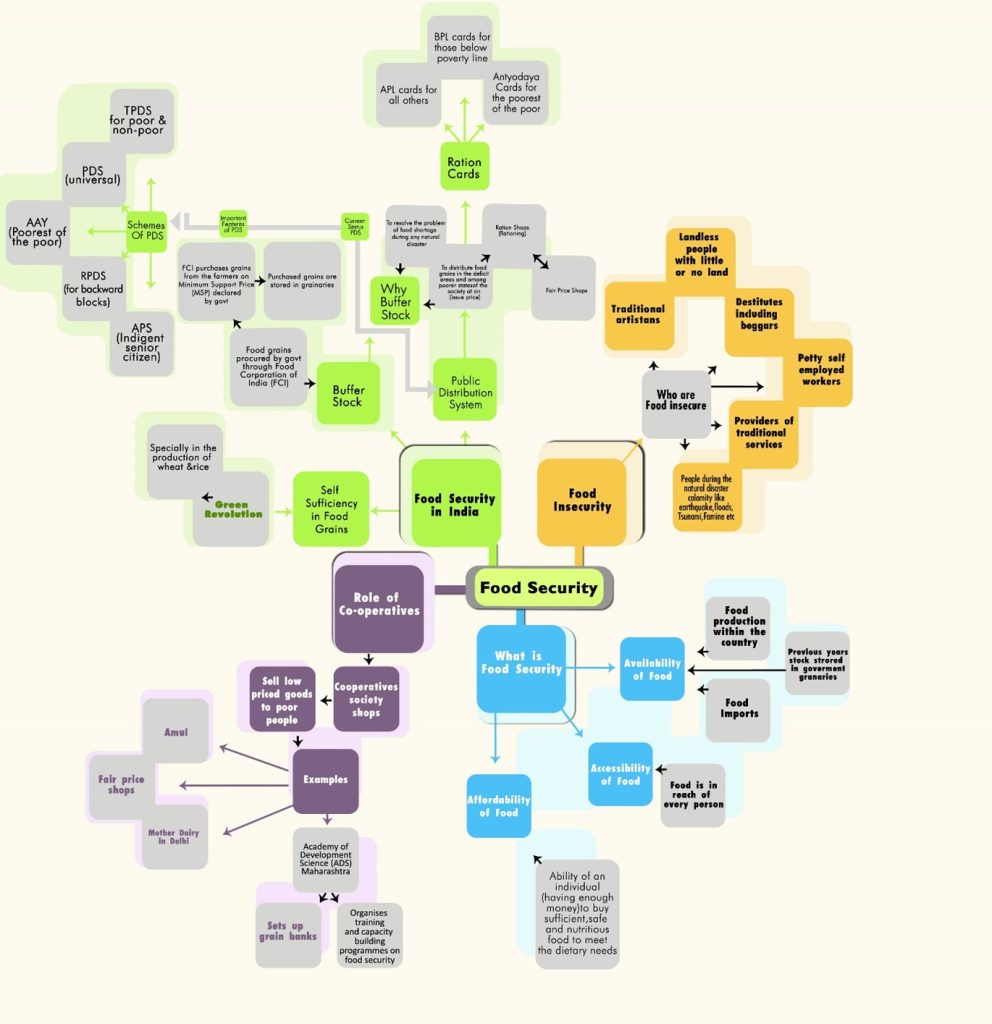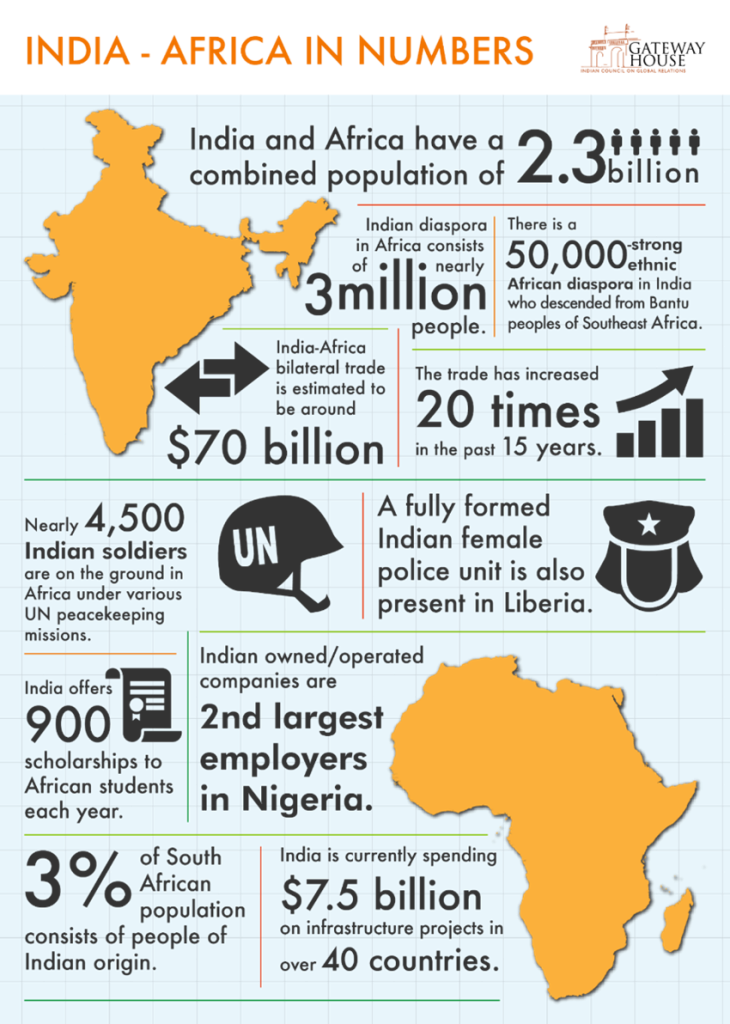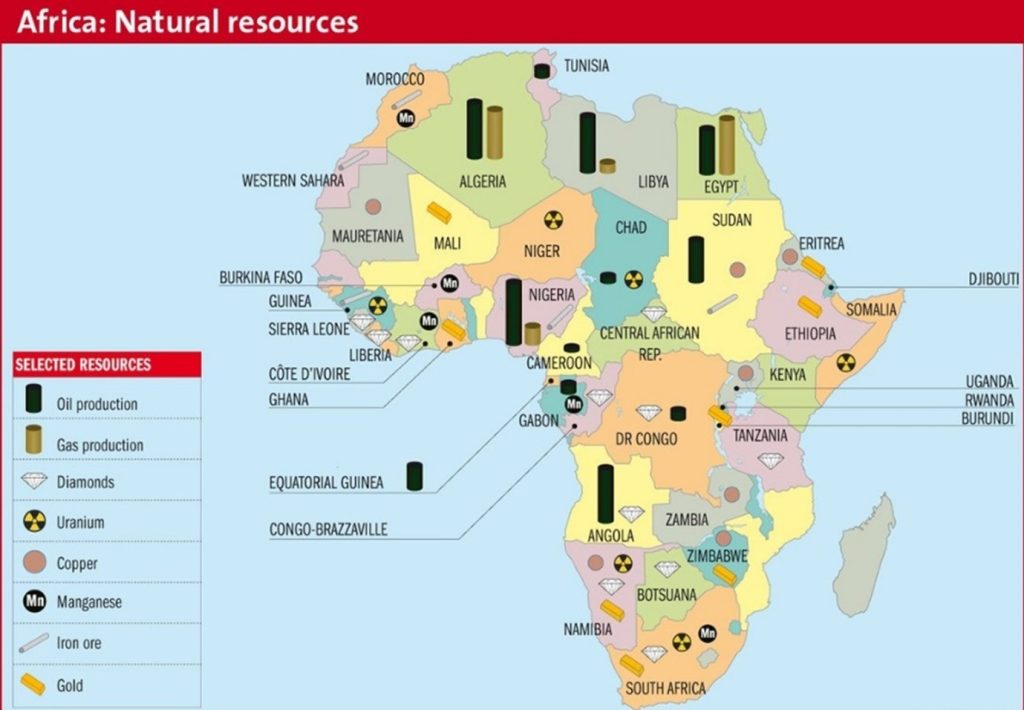Contents:
- Law Commission: Its Role, Members, and Key Recommendations
- Singapore and Semiconductors: Strengthening Ties Through Chip Manufacturing
- The Food Security Act Has Revamped the Public Distribution System (PDS)
- Africa Can Make India’s ‘Critical Mineral Mission’ Shine
Law Commission: Its Role, Members, and Key Recommendations
Context: The 23rd Law Commission of India has been constituted by the Union government effective from September 1, 2024.
Relevance: General Studies Paper II – Polity and Governance
Mains Question: Evaluate the role of the Law Commission of India in legal reform. Discuss the key recommendations of the 22nd Law Commission and their significance for governance in India.

- Role and Importance of the Law Commission:
- The Law Commission is an advisory body, constituted by the Ministry of Law and Justice, tasked with reviewing the country’s laws and making recommendations for reforms.
- It plays a critical role in ensuring that the legal framework remains aligned with current socio-economic conditions.
- Recent priorities include the Uniform Civil Code and electoral reforms.
- Composition of the 23rd Law Commission:
- The 23rd Law Commission will serve a three-year term, ending on August 31, 2027.
- It will have a full-time chairperson, four full-time members, and a member-secretary, alongside ex-officio members from legislative departments.
- Serving judges from the Supreme Court or High Courts, along with legal scholars, can be appointed as members.
- Terms of Reference for the 23rd Law Commission:
- The 23rd Commission will continue the work of previous panels, identifying outdated laws for repeal and recommending necessary amendments to existing laws.
- It is tasked with ensuring laws are in harmony with contemporary economic and social needs.
- It will also examine the “existing laws in light of the Directive Principles of State Policy” and suggest legislative reforms necessary to achieve constitutional objectives.
- What the 22nd Law Commission Addressed:
- The 22nd Commission recommended retaining Section 124A of the Indian Penal Code (sedition law) while urging reforms to prevent misuse.
- The Commission addressed issues such as militancy, terrorism, and laws affecting marginalized communities.
- It also submitted key recommendations on the Uniform Civil Code and simultaneous elections, both of which remain major political and legal debates.
- Prime Minister’s Focus on Uniform Civil Code:
- In line with the Prime Minister’s recent focus, the 23rd Commission is expected to examine the implementation of a Uniform Civil Code in India.
- The issue remains contentious, reflecting the broader debate on balancing secular law with religious practices.
- Ongoing Legal Reforms:
- The Commission’s recommendations have historically shaped major legal reforms, such as amendments to the Criminal Procedure Code and the Right to Education Act.
- It is also tasked with conducting post-enactment audits of legislation to ensure effectiveness and relevance.
Conclusion: The Law Commission of India plays an instrumental role in shaping legal reforms and ensuring laws remain relevant to the changing needs of society. The 23rd Law Commission will continue this work, focusing on significant issues like the Uniform Civil Code, outdated laws, and broader governance reforms. Its recommendations will be crucial in guiding the government’s efforts to modernize India’s legal framework.
Singapore and Semiconductors: Strengthening Ties Through Chip Manufacturing
Context: During his visit to Singapore, Prime Minister Narendra Modi highlighted the growing importance of semiconductor collaboration between India and Singapore.
Relevance: General Studies Paper II – International Relations
General Studies Paper III – Economic Development and Science and Technology
Mains Question: Discuss the significance of India’s collaboration with Singapore in semiconductor manufacturing. How can this partnership enhance India’s strategic and economic position in the global semiconductor industry?
- Overview of PM Modi’s Visit:
- Prime Minister Narendra Modi visited Singapore after a stop in Brunei as part of his Southeast Asia trip.
- Key discussions focused on semiconductors, digital technologies, defense, space, and cultural cooperation with the newly elected Singaporean Prime Minister, Lawrence Wong.
- The visit resulted in the signing of the Memorandum of Understanding (MoU) on an India-Singapore Semiconductor Ecosystem Partnership.
- Importance of Semiconductors:
- Semiconductors are essential in various sectors, from defense and space to consumer electronics like smartphones and automobiles.
- India’s government is focused on building its semiconductor manufacturing capabilities, which is part of its larger “Atmanirbhar Bharat” (self-reliant India) vision.
- India’s Push for Semiconductor Self-reliance:
- Global chip shortages, exacerbated by the COVID-19 pandemic and geopolitical factors, have affected supply chains.
- India’s collaboration with Singapore in chip fabrication is part of its strategy to overcome reliance on foreign suppliers and strengthen domestic production.
- Singapore’s Semiconductor Industry:
- Singapore has an established semiconductor industry, with leading players in integrated circuit (IC) design, wafer production, packaging, and equipment.
- Major semiconductor companies such as GlobalFoundries and Taiwan’s United Microelectronics have set up significant operations in Singapore.
- Challenges and Opportunities:
- Singapore specializes in “mature-node chips,” used in applications like automobiles and industrial equipment.
- The challenge for India lies in bridging the technology gap and attracting investments to build capacity for high-end chip production.
- India is looking at Singapore’s experience to reduce the cost of chip manufacturing while improving efficiency.
- Global Competition and Taiwan’s Role:
- Singapore faces competition from other nations like Taiwan, which remains a global leader in advanced semiconductor manufacturing.
- Taiwan’s companies, such as TSMC and NXP Semiconductors, are expanding their operations, which poses a challenge for India and Singapore’s collaborative efforts to gain a foothold in this critical industry.
- Significance of the Partnership:
- The India-Singapore partnership in semiconductor development is expected to help India overcome challenges in technology, skill development, and infrastructure.
- The partnership will also contribute to India’s ambition of becoming a global semiconductor hub, benefiting from Singapore’s expertise in the industry.
- Lessons from Singapore’s Experience:
- Singapore’s growth as a semiconductor hub is rooted in policies aimed at attracting foreign investments, building infrastructure, and developing a skilled workforce.
- India’s collaboration with Singapore provides an opportunity to learn from these strategies and adapt them to its own semiconductor goals.
Conclusion: India’s partnership with Singapore in semiconductor development offers a promising avenue for both countries to strengthen their positions in the global chip manufacturing industry. By leveraging Singapore’s advanced infrastructure and expertise, India can make significant strides toward semiconductor self-reliance. Addressing challenges such as technology gaps and global competition will be crucial in realizing the full potential of this collaboration.
The Food Security Act Has Revamped the Public Distribution System (PDS)
Context: The National Food Security Act (NFSA) of 2013 aimed to overhaul India’s Public Distribution System (PDS) to ensure better food security for the country’s most vulnerable populations. The PDS, which had been plagued by leakages and inefficiencies, was expected to improve with the implementation of the NFSA. Data from various studies, such as the National Sample Survey (NSS) and the Household Consumption Expenditure Survey (HCES), indicate significant reductions in leakages and improvements in the system since NFSA reforms were implemented.
Relevance: General Studies Paper II and III, focusing on government policies, social justice, and the role of the PDS in ensuring food security in India. It also touches upon the NFSA, welfare schemes for vulnerable populations, and the digitization and transparency of social welfare programs.
Mains Question: Discuss how the National Food Security Act (NFSA) has reformed the Public Distribution System (PDS) in India. Highlight the challenges and successes of these reforms.

- The Need for PDS Reform:
- Before the NFSA, PDS leakages were a significant concern. The NSS data of 2011-12 showed an all-India level leakage rate of 41.7%.
- States that implemented PDS reforms before the NFSA, such as Bihar, Chhattisgarh, and Odisha, witnessed notable reductions in leakages—Bihar (91% to 24%), Chhattisgarh (52% to 9%), and Odisha (76% to 25%).
- Implementation of NFSA:
- The NFSA, passed in 2013, aimed to expand PDS coverage to more vulnerable sections of society, mandating the provision of food grains to the poor at subsidized rates.
- The HCES 2022-23 showed a reduction in PDS leakages, which now stands at 22% compared to 41.7% in 2011-12.
- Data and Methodology for Estimating Leakages:
- The Food Corporation of India (FCI) and the Ministry of Food estimate leakages by comparing PDS rice and wheat off-take with actual consumption.
- The HCES of 2022-23 reflects the proportion of households purchasing rice and wheat from PDS stores.
- The estimates take into account off-take under schemes like Pradhan Mantri Garib Kalyan Anna Yojana (PMGKAY), which was discontinued in December 2022.
- Improvements in PDS Coverage:
- The NFSA expanded the PDS to cover over 50% of rural households and 75% of urban households, ensuring that most eligible households receive subsidized food grains.
- HCES data shows an improvement in PDS usage, with 63% of households now purchasing food grains from the PDS.
- The proportion of households not buying from PDS has decreased by 17% since 2011-12.
- Challenges and Ongoing Issues:
- Although coverage has improved, some states have experienced increased leakages due to delayed reforms or resistance to implementing measures like the Aadhaar-based biometric authentication (ABBA).
- States like Tamil Nadu and Jharkhand have seen increases in leakages in recent years.
- Role of Technology in PDS Reforms:
- Reforms such as doorstep delivery of food grains, digitization of records, and management of PDS at the panchayat level have been key to reducing leakages.
- The use of ABBA for authentication has been contested, with surveys in some regions showing that this system failed to work for many beneficiaries.
- Impact on Household Consumption:
- The NFSA has had a positive impact on household food security, increasing the percentage of households regularly accessing PDS grains.
- However, studies show that the PDS could have a broader reach if certain technological barriers, such as eKYC and authentication issues, are addressed.
- Conclusion: The National Food Security Act has made significant strides in reforming India’s Public Distribution System by expanding coverage and reducing leakages. Early reforming states have seen the most success, with significant reductions in food grain leakages and improved food security for millions of households. While challenges like technological issues and uneven state-level implementation persist, the NFSA has laid a strong foundation for a more efficient and equitable PDS, contributing to the country’s goal of ensuring food security for all.
Africa Can Make India’s ‘Critical Mineral Mission’ Shine
Context: India’s Critical Mineral Mission, outlined in the Union Budget 2024-25, aims to secure critical minerals necessary for its energy transition and industrial growth. These minerals are essential for emerging technologies like batteries, solar panels, and electric vehicles. Africa, rich in mineral resources, offers significant opportunities for collaboration to meet India’s growing demand for critical minerals. The recently signed agreements and partnerships between India and African nations are seen as crucial steps in securing a sustainable supply chain for these minerals.
Relevance to General Studies (GS) Paper: This topic is relevant to General Studies Paper II and III, focusing on international relations, resource diplomacy, economic development, and India’s energy security. It also pertains to science and technology and the need for critical minerals in India’s industrial growth and sustainability.
Mains Question: Discuss the importance of Africa in India’s Critical Mineral Mission. How can this collaboration contribute to India’s energy security and industrial growth?





- India’s Critical Mineral Mission:
- The Critical Mineral Mission was proposed in the Union Budget 2024-25, focusing on securing critical minerals, expanding domestic production, and exploring overseas acquisition of mineral resources.
- The Ministry of Mines has been actively working on agreements and partnerships to achieve these objectives, with Africa playing a crucial role in India’s mineral supply chain.
- Africa’s Role in India’s Supply Chain:
- Africa is home to approximately 30% of the world’s mineral resources, making it a vital partner for India in securing critical minerals like lithium, cobalt, and rare earth elements.
- India’s collaboration with African countries includes the establishment of joint ventures, such as Khanij Bidesh India Limited (KABIL), which is focused on securing critical mineral supplies through overseas exploration and mining agreements.
- Recent Partnerships with Africa:
- In January 2024, India signed a major agreement for lithium exploration and mining in Argentina, which includes five blocks owned by Camyen in the Catamarca province.
- India’s engagement with African nations includes technical cooperation, capacity building, and infrastructure development in mining sectors.
- Opportunities for Collaboration:
- African nations are increasingly focusing on diversifying their economies and adding value to raw materials, providing opportunities for collaboration with India in mineral processing and beneficiation.
- Several African countries, such as Zimbabwe, Namibia, and Ghana, are implementing policies to promote value addition and local management of mineral resources, aligning with India’s need for processed minerals.
- China’s Influence and India’s Strategy:
- China’s dominance in the critical mineral sector poses a challenge for India, making it crucial to diversify its supply chains and reduce reliance on China for key materials.
- India’s investments in Africa aim to counterbalance China’s influence and secure a stable supply of minerals needed for its renewable energy transition.
- Technological and Infrastructure Development:
- India’s collaboration with Africa will focus on building resilient supply chains by helping African countries develop their mining infrastructure, adopt modern mining technologies, and enhance ecological practices.
- The Indian government has allocated $2 billion for solar projects in Africa, demonstrating its commitment to sustainable energy collaboration.
- Long-term Benefits for India and Africa:
- The partnership will benefit both regions: India will secure critical minerals essential for its industrial development, while African nations will gain investments, technology, and infrastructure improvements.
- Africa’s growing focus on value-added mineral production aligns with India’s needs for processed materials to support its battery and clean energy industries.
Conclusion: Africa’s mineral wealth is a critical component of India’s strategy to secure essential resources for its energy transition and technological growth. The collaboration between India and African nations promises mutual benefits, from securing minerals for India’s industries to fostering economic development in Africa. Through this partnership, India can build a sustainable and resilient supply chain for critical minerals, essential for achieving its industrial and energy goals.




